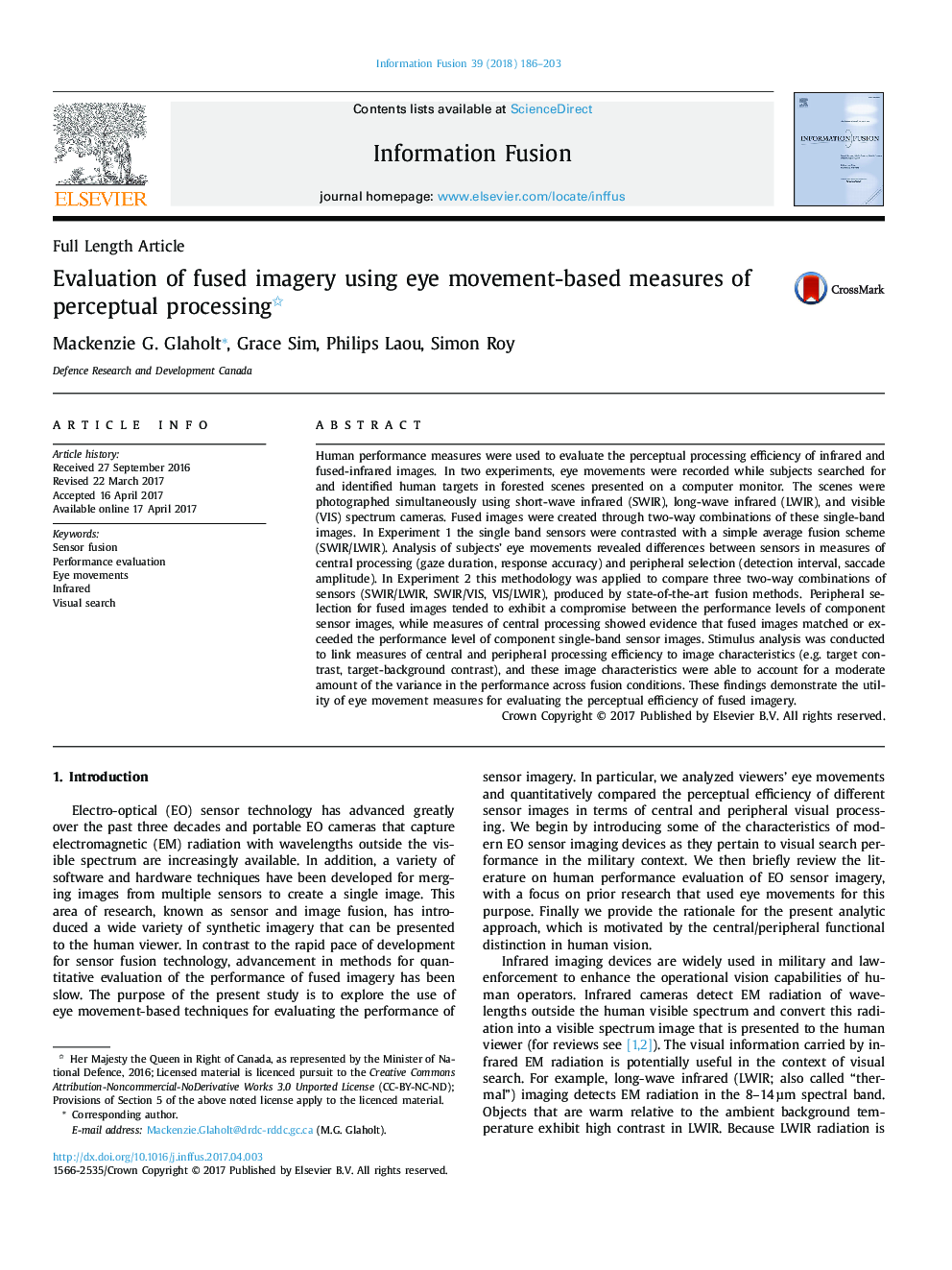| Article ID | Journal | Published Year | Pages | File Type |
|---|---|---|---|---|
| 4969169 | Information Fusion | 2018 | 18 Pages |
â¢An eye movement-based methodology for quantitatively evaluating fused images.â¢Measures of central and peripheral visual processing efficiency.â¢Performance measures differentiated fused images from component single band images.â¢Performance measures differentiated two-way fusion schemes and fusion methods.â¢Conducted stimulus modeling in order to predict performance outcomes.
Human performance measures were used to evaluate the perceptual processing efficiency of infrared and fused-infrared images. In two experiments, eye movements were recorded while subjects searched for and identified human targets in forested scenes presented on a computer monitor. The scenes were photographed simultaneously using short-wave infrared (SWIR), long-wave infrared (LWIR), and visible (VIS) spectrum cameras. Fused images were created through two-way combinations of these single-band images. In Experiment 1 the single band sensors were contrasted with a simple average fusion scheme (SWIR/LWIR). Analysis of subjects' eye movements revealed differences between sensors in measures of central processing (gaze duration, response accuracy) and peripheral selection (detection interval, saccade amplitude). In Experiment 2 this methodology was applied to compare three two-way combinations of sensors (SWIR/LWIR, SWIR/VIS, VIS/LWIR), produced by state-of-the-art fusion methods. Peripheral selection for fused images tended to exhibit a compromise between the performance levels of component sensor images, while measures of central processing showed evidence that fused images matched or exceeded the performance level of component single-band sensor images. Stimulus analysis was conducted to link measures of central and peripheral processing efficiency to image characteristics (e.g. target contrast, target-background contrast), and these image characteristics were able to account for a moderate amount of the variance in the performance across fusion conditions. These findings demonstrate the utility of eye movement measures for evaluating the perceptual efficiency of fused imagery.
